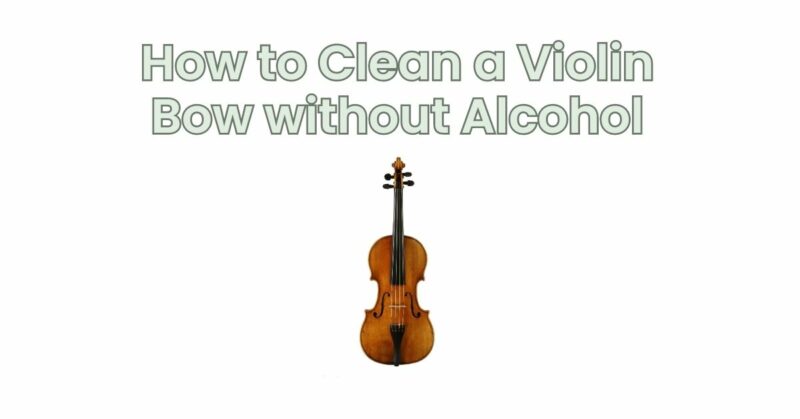Cleaning your violin bow regularly is crucial for maintaining its performance and prolonging its lifespan. While alcohol is commonly used for cleaning purposes, some individuals prefer to avoid using it due to personal preferences or concerns about potential effects on the bow hair. In this article, we will explore alternative methods for cleaning a violin bow without alcohol, offering safe and effective options to keep your bow in optimal condition.
- Dry Cleaning with a Soft Cloth:
- Dry cleaning is a gentle and safe method that effectively removes rosin residue and dust from the bow hair.
- Take a clean, soft cloth (such as a microfiber cloth) and gently wipe the bow hair along its entire length.
- Apply light pressure to remove loose rosin and debris. Be careful not to pull or twist the hair excessively.
- Bow Hair Cleaning Papers:
- Bow hair cleaning papers are specifically designed to remove rosin buildup from violin bow hair without the need for solvents.
- These papers contain a slightly abrasive material that helps lift the rosin particles from the hair.
- Place the cleaning paper between the bow hair and the strings, then draw the bow back and forth to rub the hair against the paper. Repeat this process several times until the desired result is achieved.
- Bow Hair Cleaning Eraser:
- Bow hair cleaning erasers are another alternative to alcohol-based cleaning methods.
- These erasers are soft and pliable, designed to gently remove rosin residue from the hair.
- Hold the eraser against the hair and apply light pressure while moving it along the length of the hair. This action helps to pick up and lift the rosin particles.
- Soft Brush:
- A soft brush, such as a clean makeup brush or a specialized bow hair brush, can be used to remove loose rosin from the bow hair.
- Gently brush the hair from frog to tip, using light strokes to dislodge any rosin particles. Be cautious not to apply excessive pressure or pull the hair too forcefully.
- Professional Rehairing:
- If your bow hair is heavily soiled or requires deep cleaning, it is advisable to seek professional rehairing.
- Professional rehairing involves replacing the old hair with new strands, ensuring optimal performance and cleanliness.
- A luthier or bow maker with expertise in rehairing can perform this delicate task, ensuring the hair is properly aligned and fitted to the bow.
Conclusion:
Cleaning your violin bow without alcohol is possible with alternative methods that are safe and effective. Dry cleaning with a soft cloth, using bow hair cleaning papers or erasers, and employing a soft brush are all viable options for removing rosin residue and keeping the hair in optimal condition. If your bow requires deep cleaning or extensive maintenance, professional rehairing is recommended. Remember to handle the bow hair with care, avoiding excessive pressure or aggressive cleaning techniques. Regular cleaning and maintenance contribute to the longevity and optimal performance of your violin bow, allowing you to enjoy playing with a well-maintained instrument.


